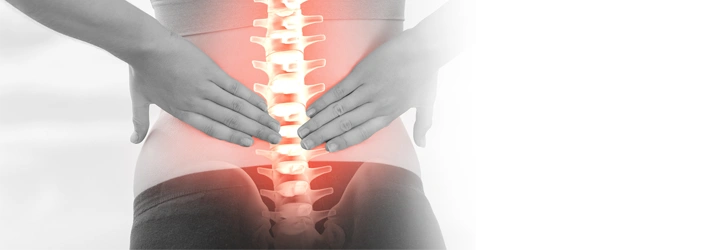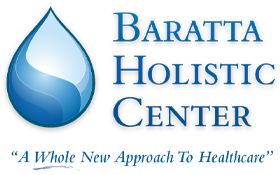Tailbone (Coccyx) Pain In Carmichael CA

Coccydynia, commonly called tailbone pain or coccyx pain in Carmichael CA, is a fairly rare and relatively poorly understood condition that can cause constant pain at the very bottom of the spine. This part of the spine is the coccyx, or tailbone. Coccydynia is felt as localized pain and will generally feel worse upon sitting or with any activity that puts pressure on the bottom region of the spine.
Coccydynia may be referred to in various terms, such as:
- Coccygodynia
- Coccygeal pain
- Coccyx pain
- Coccaglia
- Tailbone pain.
Coccydynia Symptoms and Treatments in Carmichael CA
Coccydynia symptoms may consist of one or all of the following:
- Pain that is markedly worse when sitting
- Local pain in the tailbone area that is worse when touched or when any pressure is placed on it
- Pain that is worse when moving from a sitting to standing position
- Pain that is worse with constipation and feels better after a bowel movement.
A combination of treatments to reduce the pain and activity modification to keep pressure off the tailbone usually assists to control or completely alleviate the pain.
The coccyx is the very bottom portion of the spine. It represents a vestigial tail (hence the common term "tailbone") and consists of three or more very small bones fused together. The coccyx is made up of between three and five separate or fused vertebrae.
While it was originally thought that the coccyx is always fused together, it is now known that the entire coccyx is not one solid bone but often there is some limited movement between the bones permitted by the fibrous joints and ligaments
The coccyx articulates with the sacrum through a vestigial disc, and is also connected to the sacrum with ligaments. There is virtually no movement between the coccyx and the sacrum.
Why Do More Coccyx Injuries Occur in Women Than Men?
The majority of coccyx injuries occur in women because:
- The women's coccyx is rotated differently, leaving it more prone to injury
- Women have a broader pelvis, which means that sitting places pressure on their coccyx (male anatomy causes them to sit without much pressure on the coccyx)
- Pregnancy and Childbirth are common causes of the condition.
Coccydynia
In general, pain can be caused in the coccyx if an injury or some type of excess pressure on the area causes the bones to move beyond their normal very limited range of motion, resulting in inflammation and localized pain. An injury to either the ligaments or the vestigial disc may be a cause of pain. Rarely, the bones of the coccyx can fracture and cause pain. Also, in rare cases a tumor or infection in the coccyx can be a primary cause of tailbone pain.
- Typically, a diagnosis of the cause of coccydynia will identify one of the following underlying causes of pain: Local trauma. A fall on the tailbone can inflame the ligaments or injure the coccyx or the coccygeal attachment to the sacrum. This is probably the most common cause of coccydynia.
- Childbirth. During delivery, the baby's head passes over the top of the coccyx, and the pressure created against the coccyx can sometimes result in injury to the coccyx structures (the disc, ligaments and bones). While uncommon, the pressure can also cause a fracture in the coccyx.
- Tumor or infection. Rarely, coccydynia is due to a tumor or infection in the coccyx area that puts pressure on the coccyx.
A health professional diagnoses coccydynia by taking a thorough medical history from the patient and completing a physical examination.
Diagnostic tests, such as x-ray or MRI, are also commonly performed in order to rule out other potential causes of the pain.
- Physical Examination for Coccydynia (Tailbone Pain)
A thorough physical examination for coccyx pain should include:
- Pelvic and rectal exam to check for a mass or tumor that could be a cause of the pain
- Palpation to check for local tenderness.
The most striking finding on examination is usually the local tenderness upon palpation of the coccyx. If the coccyx is not tender to palpation, then the pain in the region is referred from another structure, such as a lumbosacral disc herniation or arthritis.
Treatments
The first line of treatment typically includes:
- Applying ice or a cold pack to the area several times a day for the first few days after the pain starts.
- Applying heat or a hot pack to the area after the first few days.
- Avoiding sitting for prolonged periods, or placing any pressure on the area, as much as possible.
- A custom pillow to help take pressure off the coccyx when sitting. Some find a donut-shaped pillow works well, and for others it is not the right shape and still puts pressure on the coccyx. Many prefer a foam pillow that is more of a U-shape or V-shape (with the back open so nothing touches the coccyx). Any type of pillow or sitting arrangement that keeps pressure off the coccyx is ideal.
If these methods do not remedy the problem, then your next course of action should include:
- Chiropractic manipulation. Some patients find pain relief through manual manipulation
- Stretching. Gently stretching the ligaments attached to the coccyx can be helpful. A physical therapist, chiropractor, or other appropriately trained healthcare practitioner can provide instruction on the appropriate stretches.
- Ultrasound. ultrasound can also be helpful for pain relief due to the local diffuse heat it can provide
Call Dr. Tony Baratta to schedule your appointment today!
OFFICE HOURS
Monday
8:30am - 6:00pm
Tuesday
8:30am - 6:00pm
Wednesday
8:30am - 6:00pm
Thursday
8:30am - 6:00pm
Friday
Closed
Saturday
Closed
Baratta Holistic Center
6728 Fair Oaks Blvd #300
Carmichael, CA 95608




